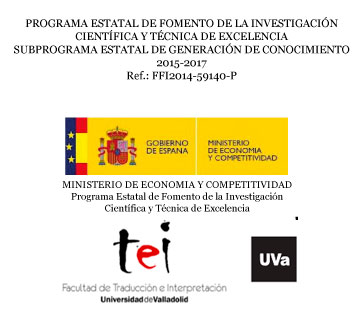CATALOGUING AND STUDY OF SPANISH-DOMINICAN AND IBERO-AMERICAN TRANSLATIONS
Ministerio de Economía y Competitividad (Programa Estatal de Fomento de la Investigación Científica y Técnica de Excelencia, Subprograma Estatal de Generación del Conocimiento. Plan Estatal de Investigación Científica y Técnica y de Innovación 2013-2016)
Ref.: FFI2014-59140-P
The project CATALOGUING AND STUDY OF SPANISH-DOMINICAN AND IBERO-AMERICAN TRANSLATIONS began on 01/01/2015 and ended on 30/06/2018, reaching an important degree of scientific information, and producing the following results in its conclusion:
Catalogued data:
738 Dominican authors, 2240 classified works, and 75 reference languages and dialects.
The catalogue can be accessed via internet and through this portal, as its database is constantly evolving and controlled by our research group.
Study of translations:
The work carried out by both the scientific team and the work team can be accessed online through this portal in the majority of cases (some publications only exist in paper form), covering important aspects in the fields of history and translation theory.
According to the translations of Dominicans in Spain or in Europe, studies have been carried out on the subject of the value of the revelation (De Luis), the Inquisition (Blanco, Boadas and Valero), “professional” translation for the chapters (Castro), philosophical translation (Castro), the contribution of the classics (Alonso), self-translation (Sastre and Marquant), translation of Rhineland mysticism in Spain and the Netherlands (Behiels), in Germany (Naupert), the figures of Friar Louis of Granada (Polvorosa), Francisco de Vitoria (Delgado), Francisco Ximénez (Vega), Melchor Cano (Marquant), Giordano Bruno and Campanella (Blanco), Matteo Bandello (Cristian Cámara), De Las Casas (Králová, Ojeda), Duvoisin (Martino).
In addition, the following have also been studied: the translators and translations of the kingdom of Valencia (Pérez Blázquez), the European influences in the reform of the Order (Sastre), the religious and cultural exchanges with the Netherlands (Behiels) or Germany (Naupert), the Biblical School of Jerusalem (Reyes).
According to educative, lexicographical and missionary work, topics such as the following have been analysed: the pedagogical component of translations (Cuéllar), education in the late Middle Ages and the Renaissance (Revuelta), or at universities (Jiménez). With regard to America, the following topics have been studied: the educative mission at universities in Peru (Rodríguez), contact with the Matsigenka (Serra), the work of interpreters (Martino and Ferreiro), anthropological translation (Albaladejo), labour in Chile and Argentina (Serra), Central America (Pérez), New Granada (Pérez Blázquez and Albaladejo), Mexico (Hurtado, Valero and Cristian Cámara) or California (Vega). Works such as the following have been studied: Cartilla y Doctrina cristiana by Bartolomé Roldán in the Chocho language (Resines), Gramática elemental de la lengua Quiche Achi de Rabinal by Gregorio Ramírez Donoso or Gramática y Ars bene dicendi: Arte de construcción by Friar Martín de León (Cristian Cámara), Arte de la lengua mixteca by Antonio de los Reyes and Vocabulario en lengua mixteca by Francisco de Alvarado, Escalera espiritual para llegar al Cielo by San Juan Clímaco (Valero).
With regard to Asia, the following topics were explored: the work of translation and evangelisation in the Dominican mission in Oriental Asia in the 16th and 17th centuries (Bueno), the activity of Dominican Valencians (Pérez Blázquez), the figure of Manuel Arellano (Enrique Cámara), the Dominican missions at the end of the Ming Dynasty in China (Li), the work of Juan Cobo (Li) or the successors of the kingdoms of Tonkin (Vietnam) or Cambodia (Srisongkram). Regarding the Middle East, work about Jean-Vincent Scheil stands out (Wirth). Regarding Africa, work about Senegal (Ndiaye).
With regard to the work of intersemiotic and artistic translation, the works highlight the value of the image as a form of preaching (Bueno), the visual language of architecture (Rojas), Easter in Oaxaca (Diéguez), sculpture (Salas), audiovisual communication in missions (Mallo), cinema (Bueno and Cuéllar), drawing (García-Luengo), photography (De la Cruz), intersemiotic translation without the original textualised (Lapuerta), comics (Salvador), religious symbols and signs (Da Silva), couplets of the Rosarios de la Aurora (Romero), and music (Reyes and Ndiaye).
Access to the project: http://traduccion-dominicos.uva.es
Access to the catalogue: http://traduccion-dominicos.uva.es/autores/listado

